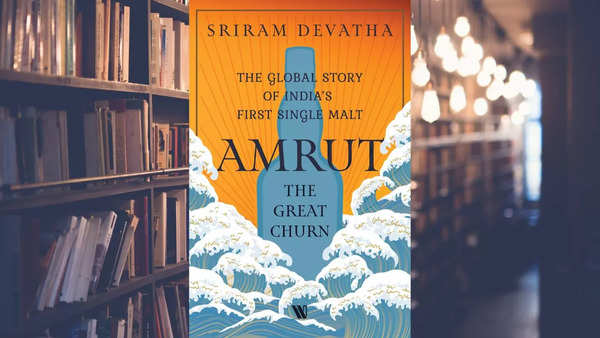And for those who belong to the former category, there is the story of ‘Amrut’, an Indian brand that went global and gained a cult-like following thanks to its exceptional notes and flavors. And in ‘Amrut’ there is a story ‘Amrut- The Great Churn’ by Siram Devatha.

‘Amrut—the Great Churn: The Global Story of India’s First Single Malt’ by Sriram Devatha (Image: Westland Business)
This is an excerpt from a book with permission from Amrut- The Great Churn: The Global Story of India’s First Single Malt, written by Siram Devatha and published by Westland Books.
Quote –
Alcohol is rich history in India. There are Vedic verses that rave about the pleasures of soma while also prohibiting it for a section of the population. The Ayurvedic text Charaka Samhita recommends moderation and notes the health benefits of calibrated consumption. This approach was reflected in the governance of the Mauryan empire, with Chanakya’s work Arthashastra recommending that alcohol should be regulated, from production to sale to the place of consumption, not too different from today’s excise laws..
Under the Mughals, attitudes changed based on authority. Akbar rarely drank alcohol and enforced a no-drinking rule at court for all but foreigners. In contrast, Akbar’s son, Jehangir, liked to drink, and Shah Jahan drank a lot. Aurangzeb was a teetotaller.
Enter England, and the legal codification and commodification of alcohol begins. Taxes were imposed on distilleries, which were an additional source of income for England, increasing land revenue. Legislation such as the Abkari Act of 1878 prohibited the extraction of toddy without permission and license and transformed mahua spirit from traditional decentralized farm distillation to central distillation, which led to the proliferation of high-content alcohol on an industrial scale and
traditional lowcontent artisanal alcohol dwindling. As India progressed towards independence, alcohol excise remained a significant source of revenue. Based on some estimates, alcohol tax is second only to land revenue!
Independent India had many administrations in eleven provinces and 565 princely states, but throughout the country, the Gandhian impulse led to a policy of temperance – almost a quarter of India passed laws on temperance. prohibition in 1954. By the mid-1960s, this trend began to reverse due to a lack of revenue as well as the tragedies of illegal brewing and hooch. Only Gandhi’s native Gujarat has retained the ban since 1960. In addition, the northeastern states of Nagaland and Mizoram and the newest entrant Bihar have a complete ban. Manipur announced a partial ban. Alcohol companies selling across India have to comply with different laws, as excise regulations are in the list of states and India currently has thirty-six states and UTs, resulting in thirty-six different approaches to the lawfrom the liberal policies of Karnataka to the state monopoly of Tamil Nadu. Drunk driving laws and health warning labels are the only laws promulgated by the central government.
As if that wasn’t complicated enough, the Panchayat Act 1996 empowers tribal areas to regulate aspects of prohibition and consumption independent of the state in which they are located. The complexity is manifested in the minimum drinking age ranging from eighteen years to twenty-five years and even up to how much alcohol can be had at home. Delhi allows 9 liters of Indian and foreign liquor and 18 liters of beer, wine or alcopop (mixed drinks like breezers). If you
living in Haryana, you can carry six bottles (750 ml each) of local liquor, eighteen bottles of IMFL (750-ml bottles of foreign liquor made in India), twelve bottles of beer (650 ml), six bottles of rum (750 . ml), six bottles of vodka / cider / gin (750 ml) and twelve bottles of wine. In contrast, Kerala allows 3 liters of IMFL and 6 liters of beer. More interesting is Madhya Pradesh, which allows you to accommodate up to one hundred bottles of expensive alcohol with an annual fee of 10,000, if your annual income exceeds 10 lakhs. Navigating these regulations will reduce alcohol consumption from alcohol!
Add to this the wide variety of drinking in India, where more than 52 percent of men in Arunachal drink, while only about 14 percent of men in Maharashtra drink alcohol. In the case of women, while the highest consumption is lower compared to men, the inter-state variation remains, with 24.2 percent of women from Arunachal drinking alcohol compared to 6.7 percent in Telangana.




